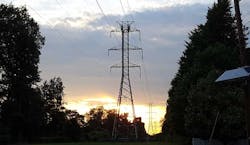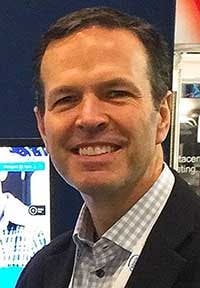Today we conclude our Data Center Executive Roundtable, a quarterly feature showcasing the insights of thought leaders on the state of the data center industry, and where it is headed. In today’s discussion, our panel of experienced data center executives – Jack Pouchet of Vertiv, Intel’s Jeff Klaus, Erich Sanchack of Digital Realty and Dennis VanLith of Chatsworth Products – discuss the impact of power purchases by large data center operators on the accessibility of renewable power and energy storage.
The conversation is moderated by Rich Miller, the founder and editor of Data Center Frontier.
Data Center Frontier: Data center companies are some of the largest consumers of renewable energy. Are these initiatives by large data center operators making clean energy more available and affordable? Will energy storage become part of the solution anytime soon?
JACK POUCHET, Vertiv
Jack Pouchet: Yes! If the forecasts are correct and data centers – inclusive of the entire ecosystem from edge to 5G nodes, regional, core, enterprise, hyperscale and colocation – grow at the projected rate, the net energy demands could increase 3X over the next decade. I’ve heard some industry pundits suggest the increase will be on the order of 5X.
Regardless of the size of the total demand – an ever-increasing proportion of the energy used by data centers is coming from renewables in one form or another. We expect this trend to continue. Further, we believe in the not-too-distant future, data centers – perhaps starting with hyperscale/colocation but equally as likely with edge, especially in remote/emerging markets – will be powered by some form of on- or near-site cogeneration, renewable, or a hybrid combination along with energy storage.
The data center industry already is providing the utility grid with potentially 2 percent capacity for 10-minute windows. That’s based on (1) the estimate that data centers are responsible for about 2 percent of total U.S. energy consumption and (2) data centers have UPS systems typically capable of 10 minutes of battery power. That’s a sizable installed base of grid-connected energy storage. In the future, data centers will become energy centers with a financial stake in the stability and availability of the local grid
DENNIS VANLITH, Chatsworth Products
Dennis VanLith: Renewable energy usage by the data center is driven mostly through purchase agreements with local power companies and direct partnerships. Typically, the data center operator builds renewable capacity and shares excess power to the grid, providing the power utility’s customers with clean, efficient energy.
From solar arrays to wind turbines, micro turbines and biogas fuel cells, the data center industry is leading the charge into the renewable future. The challenge with most renewables is timing. When the sun isn’t shining or the wind isn’t blowing, the data center still needs power. For these cases, energy storage allows for management of power through the generation-down cycle.
Many existing methods for storing energy – flywheel, battery, pumped hydro – allow for on-demand storing and conversion of energy. Data centers should invest in renewable energy storage as it drives development and adoption of a new type of backup power system that can also supplement the capacity of the power utility.
ERICH SANCHACK, Digital Realty
Erich Sanchack: We are always looking at ways to increase the efficiency of our operation from a sustainability perspective. We are the largest buyer of renewable energy among data center providers, and have certified more green buildings than any other data center provider. We doubled Green Power use between 2014 and 2016 and we utilize 100 percent Clean Power in EMEA with 39 percent Green Power Supply globally. We were the largest participant in the US DoE’s Better Buildings Challenge and we exceeded our 20 percent energy efficiency target ahead of schedule. We also executed the data center industry’s first green bond, a nearly half-billion dollar issuance earmarked exclusively for green projects.
When it comes to sustainability, there’s nothing that’s off the table for us. Our adoption and expansion of wind and solar resources is on the rise, and we are planning deployment of new technologies in the coming year that will drive further efficiencies in our sustainability programs. Energy storage is certainly among the areas of technology we are watching closely and would consider when the economics and environmental impact dynamics are aligned.
JEFF KLAUS, Intel
Jeff Klaus: I think there are a lot of discussions about how to use captive power to offset peak consumption, but it still needs better instrumentation and control to help shape workload and power consumption where the tradeoffs show ROI.
To get to that mode of operation as a more broadly accepted practice, we’ll need more successful use cases that show how to retrofit data centers, leverage environmental and power data feeds, and machine leaning algorithms to assess when the model shows ROI.
RECAP: A look back at this week’s entire Executive Roundtable.
Keep pace with the fact-moving world of data centers and cloud computing by following us on Twitter and Facebook, connecting with me on LinkedIn, and signing up for our weekly newspaper using the form below:
About the Author




